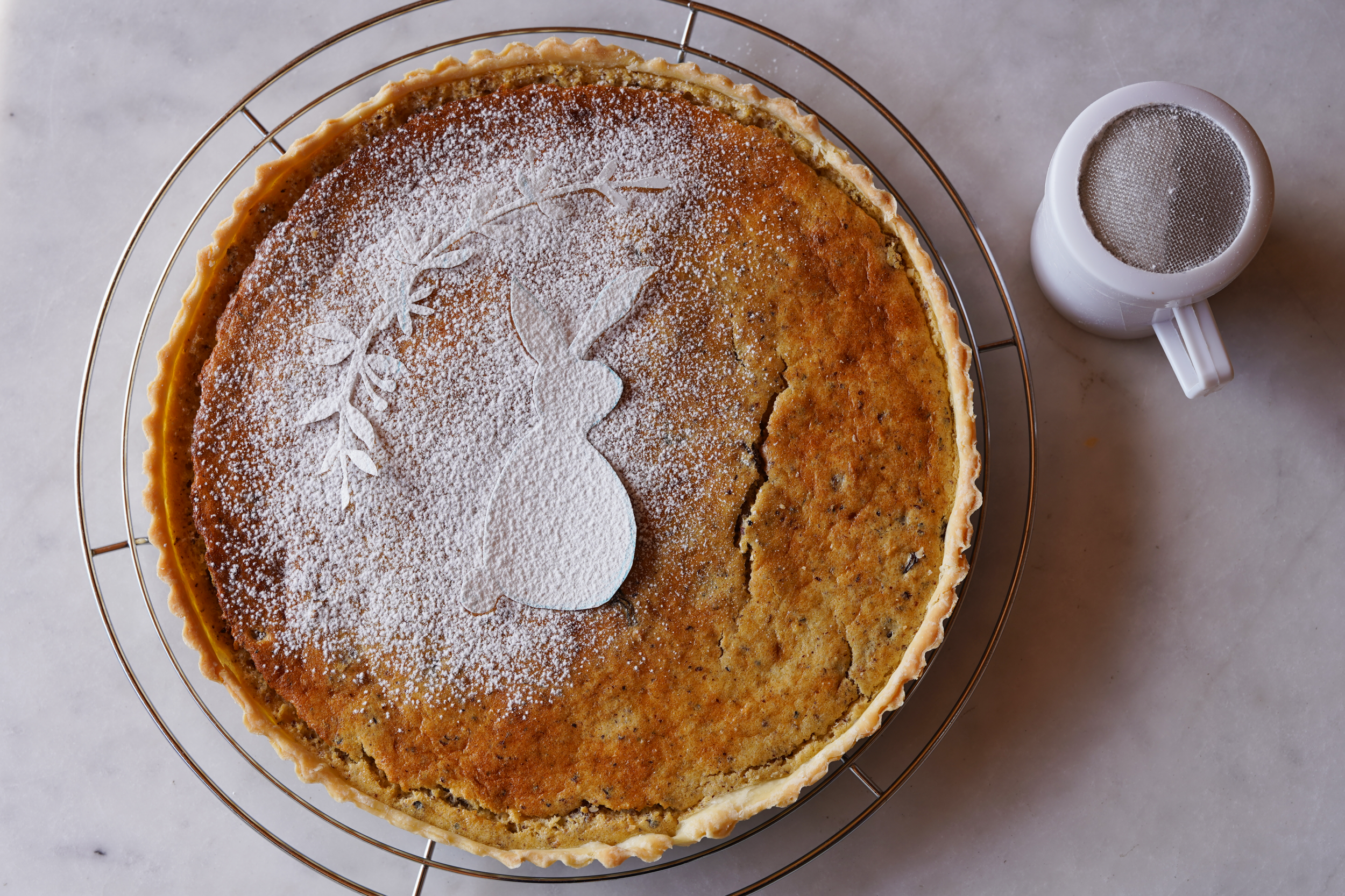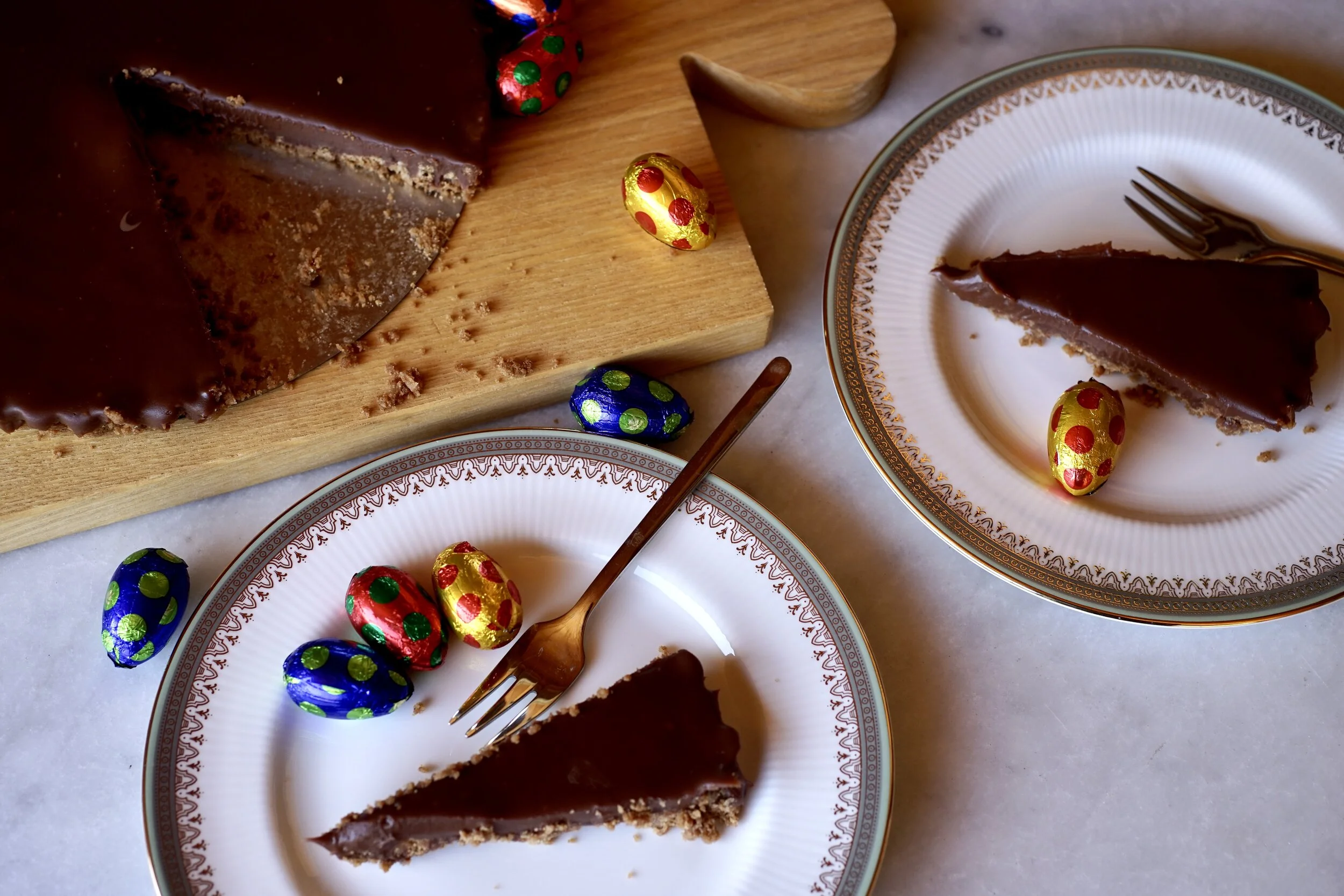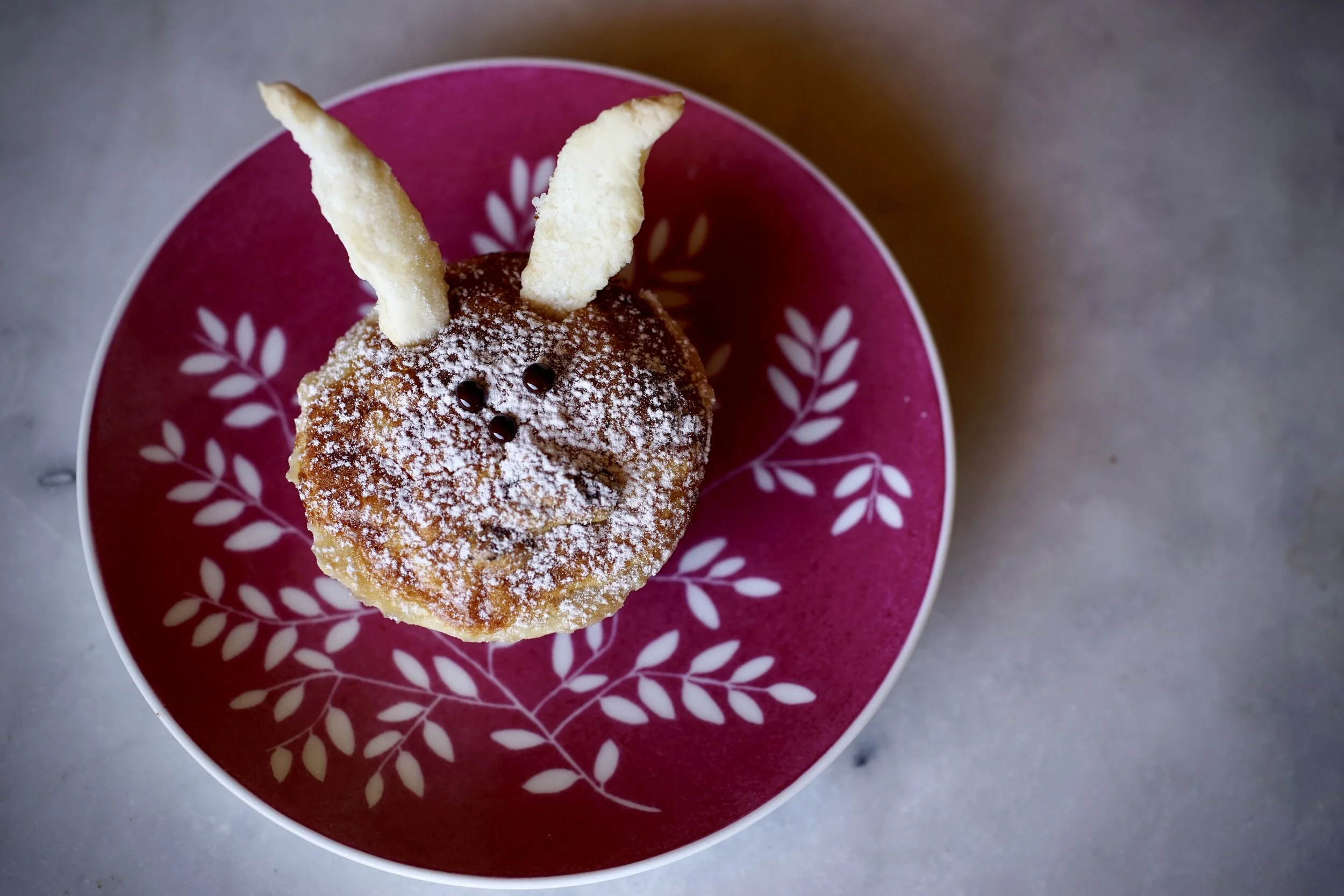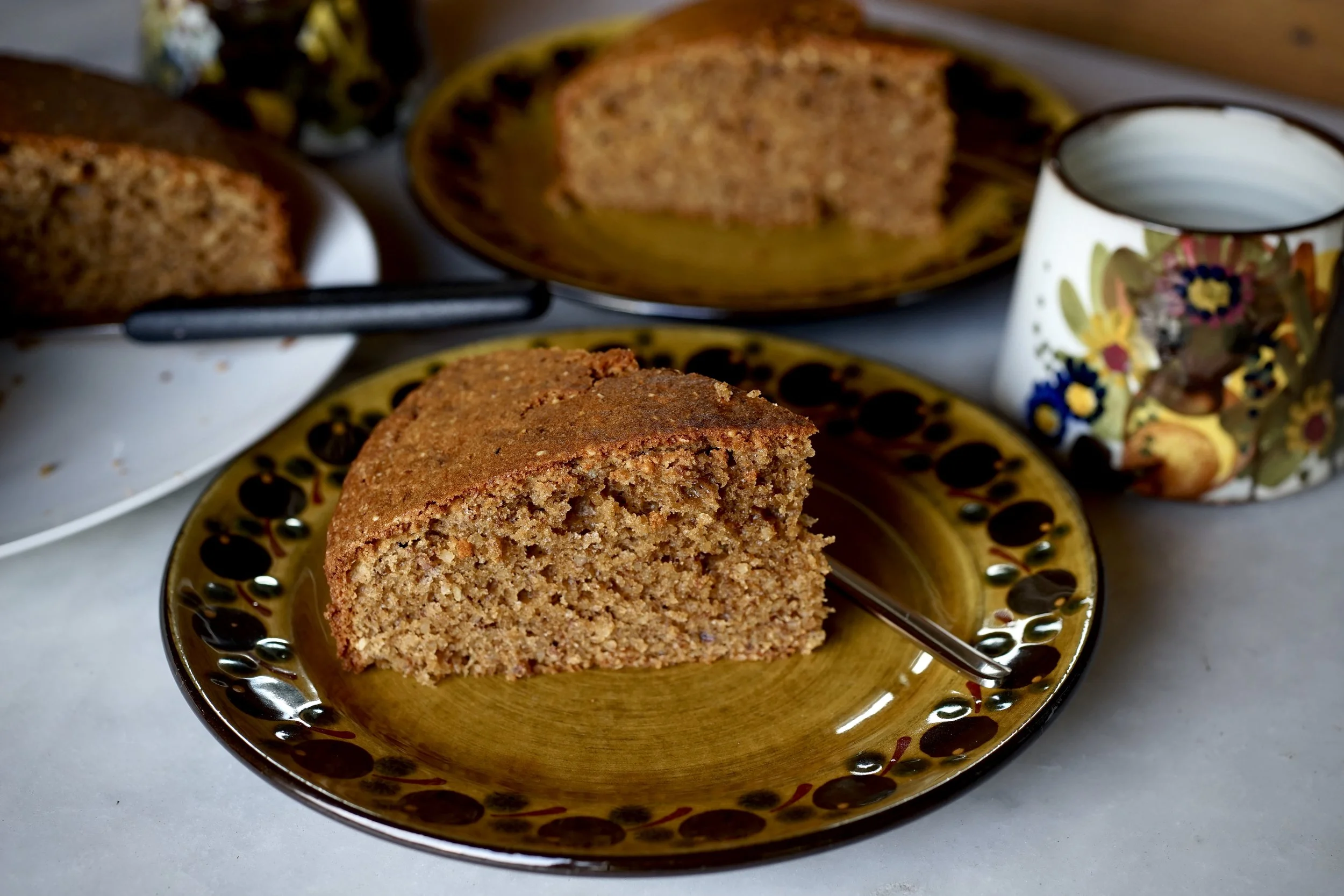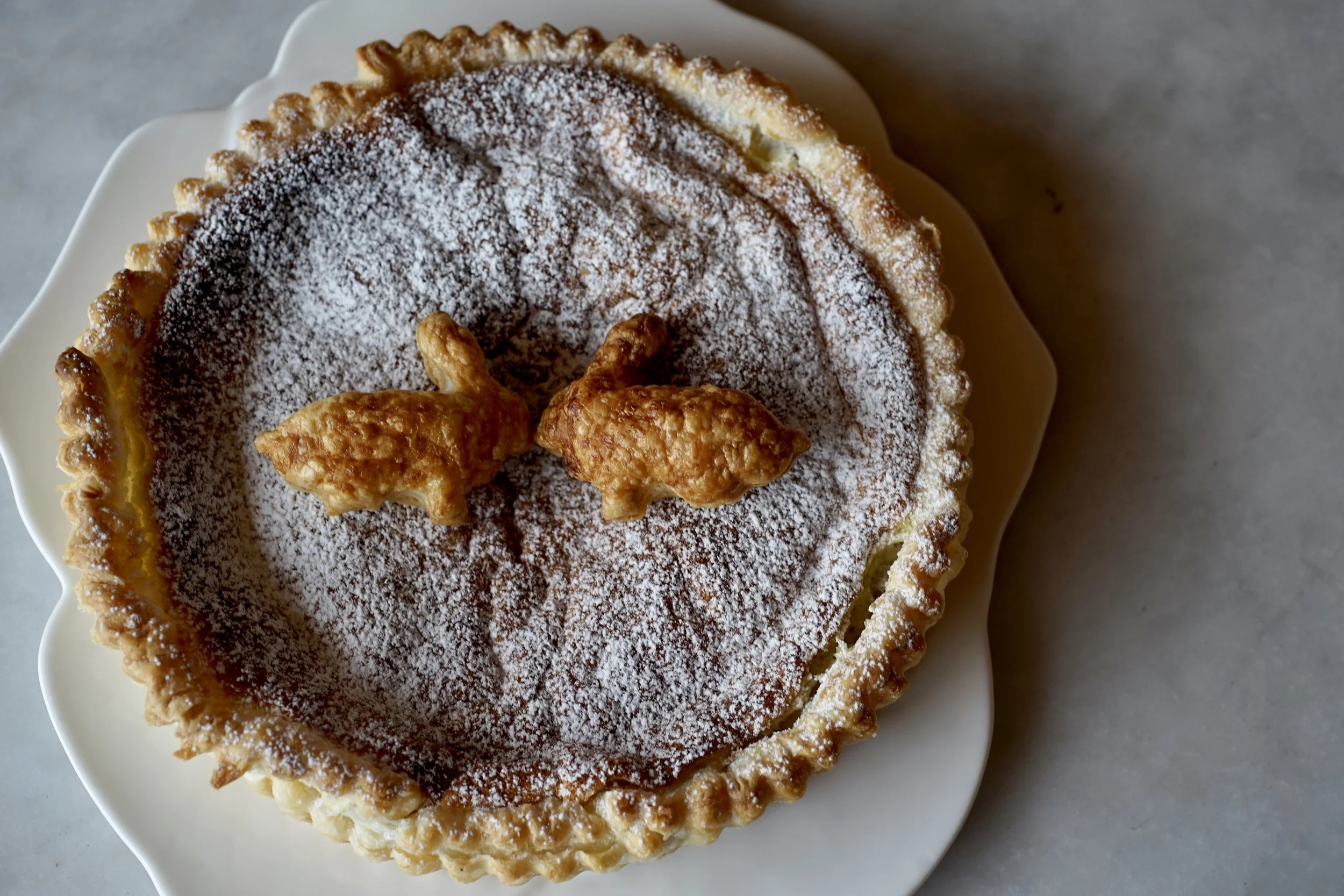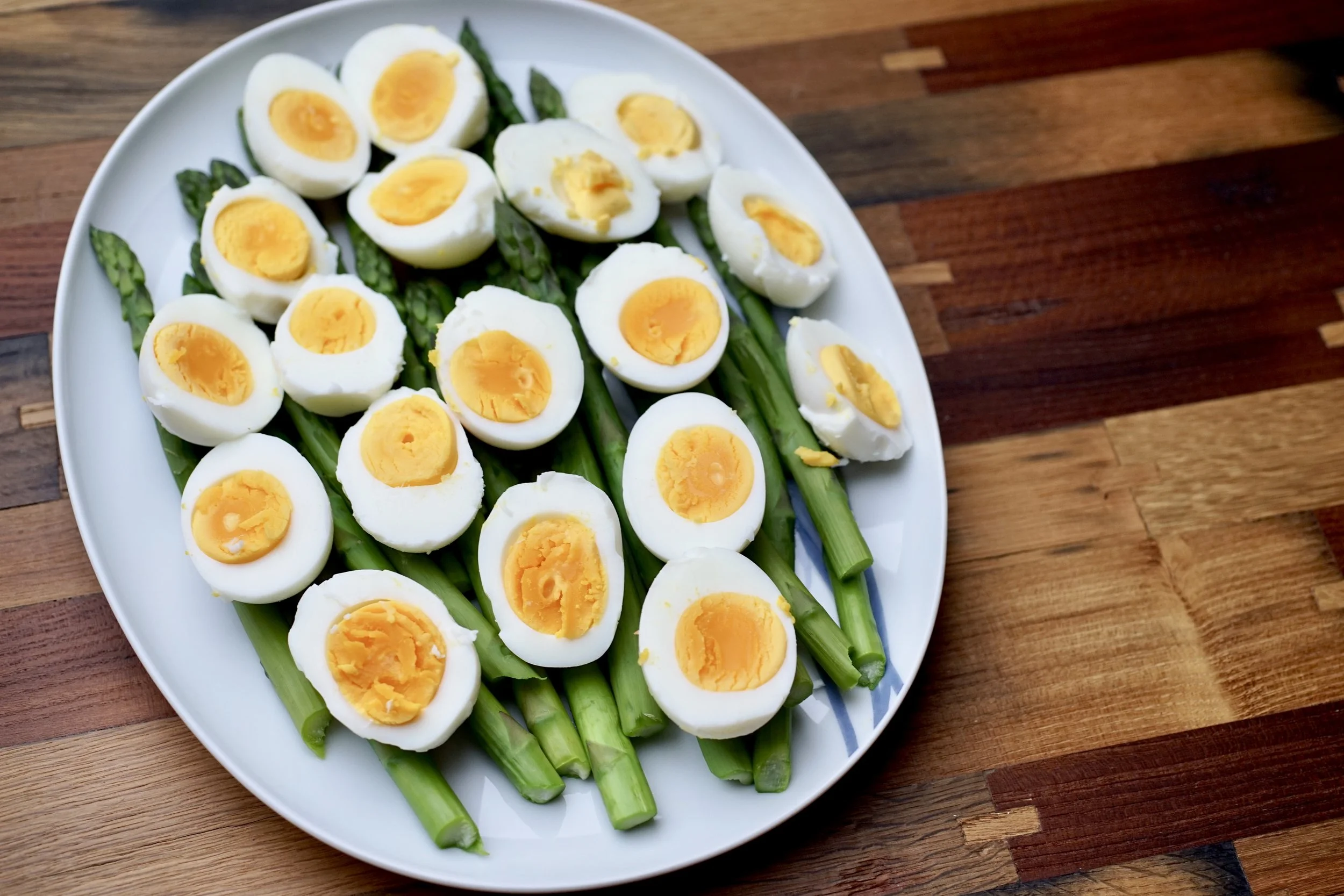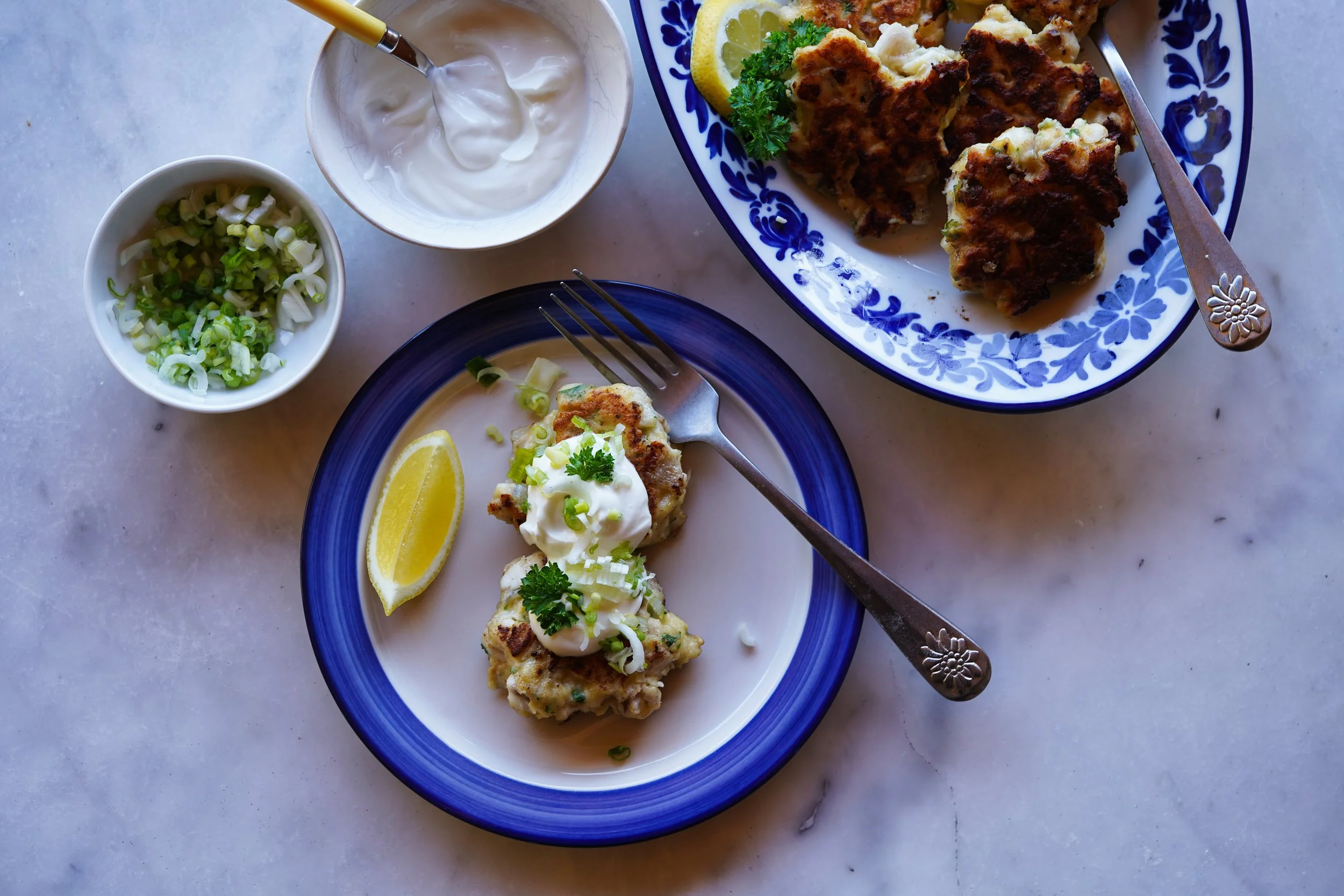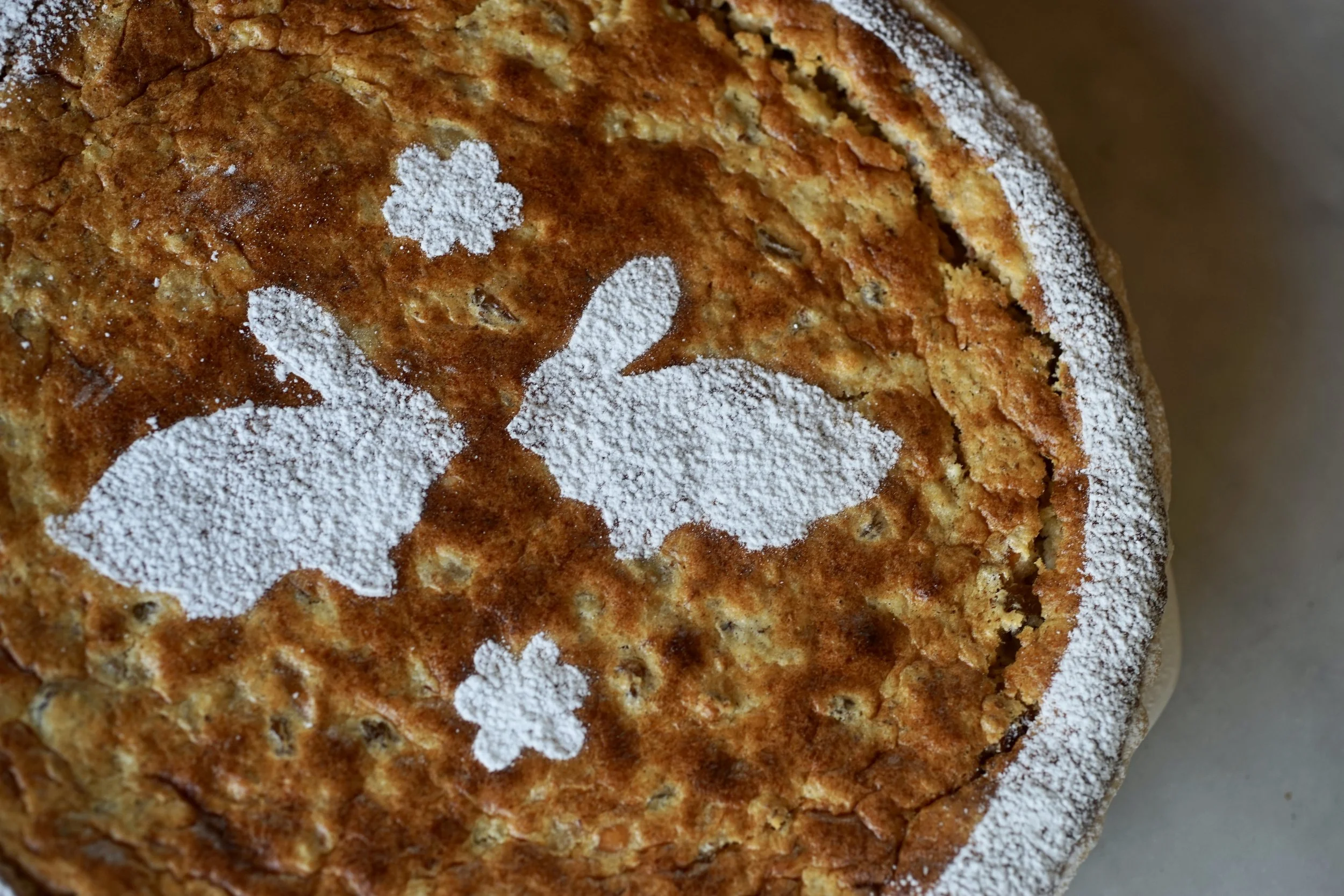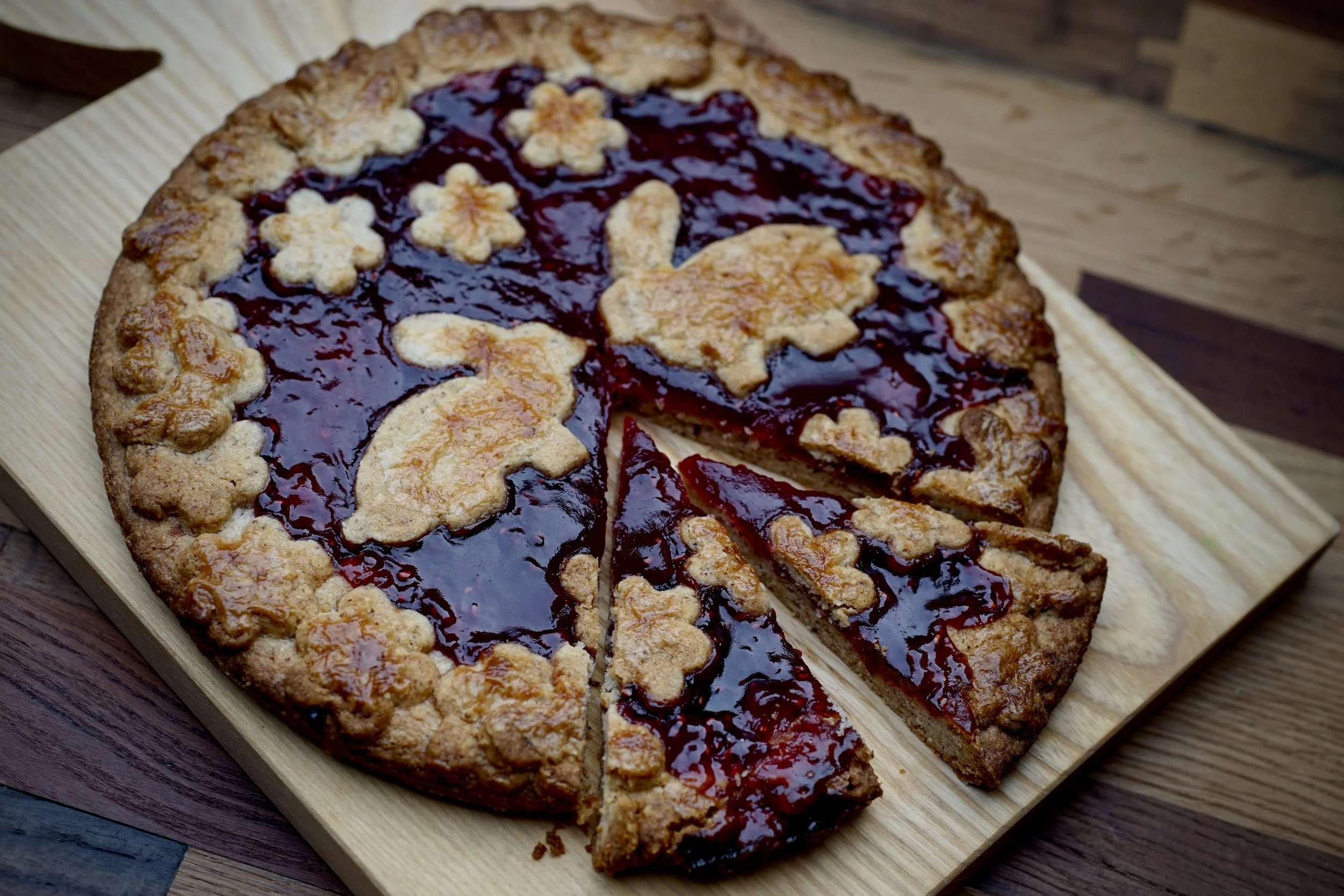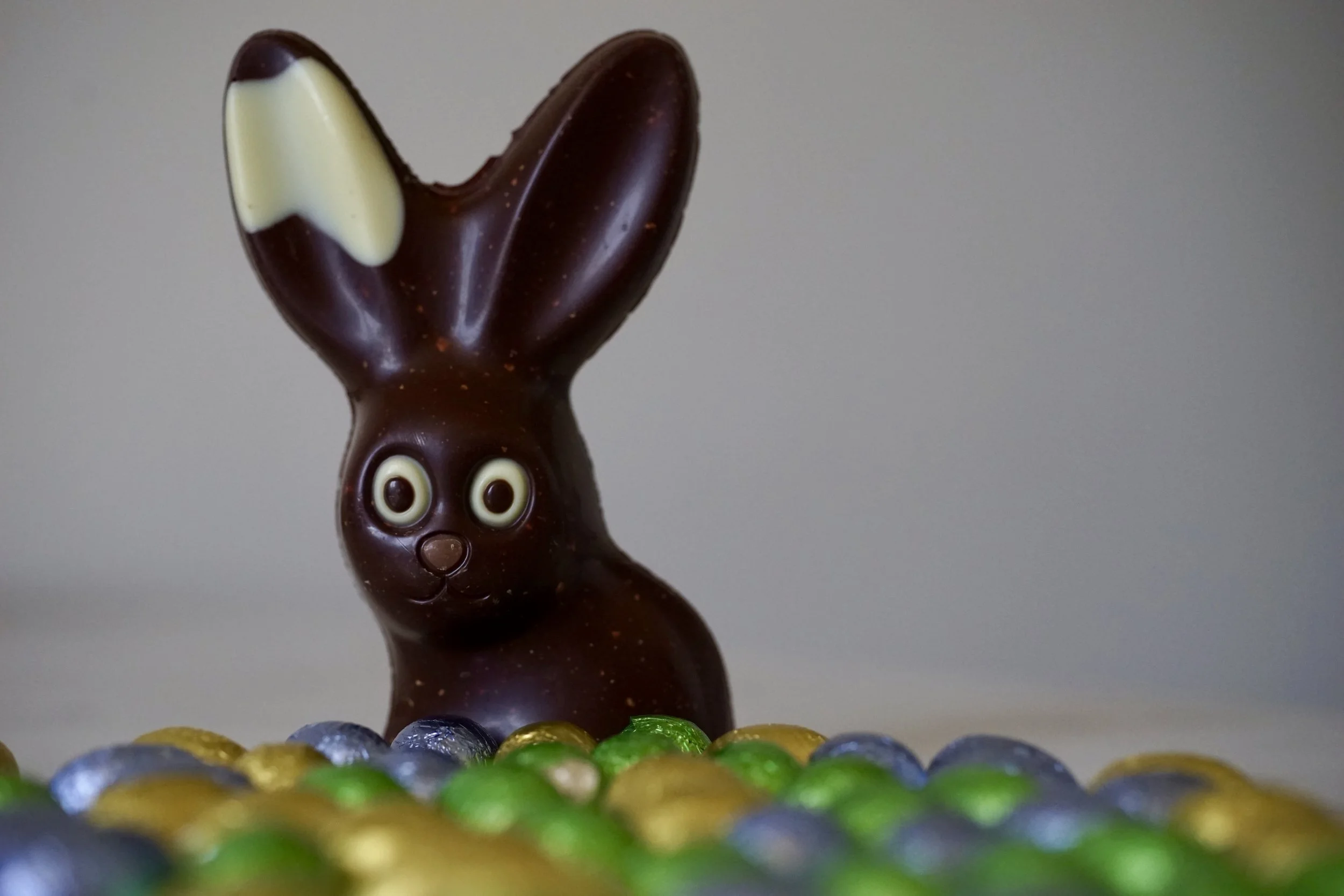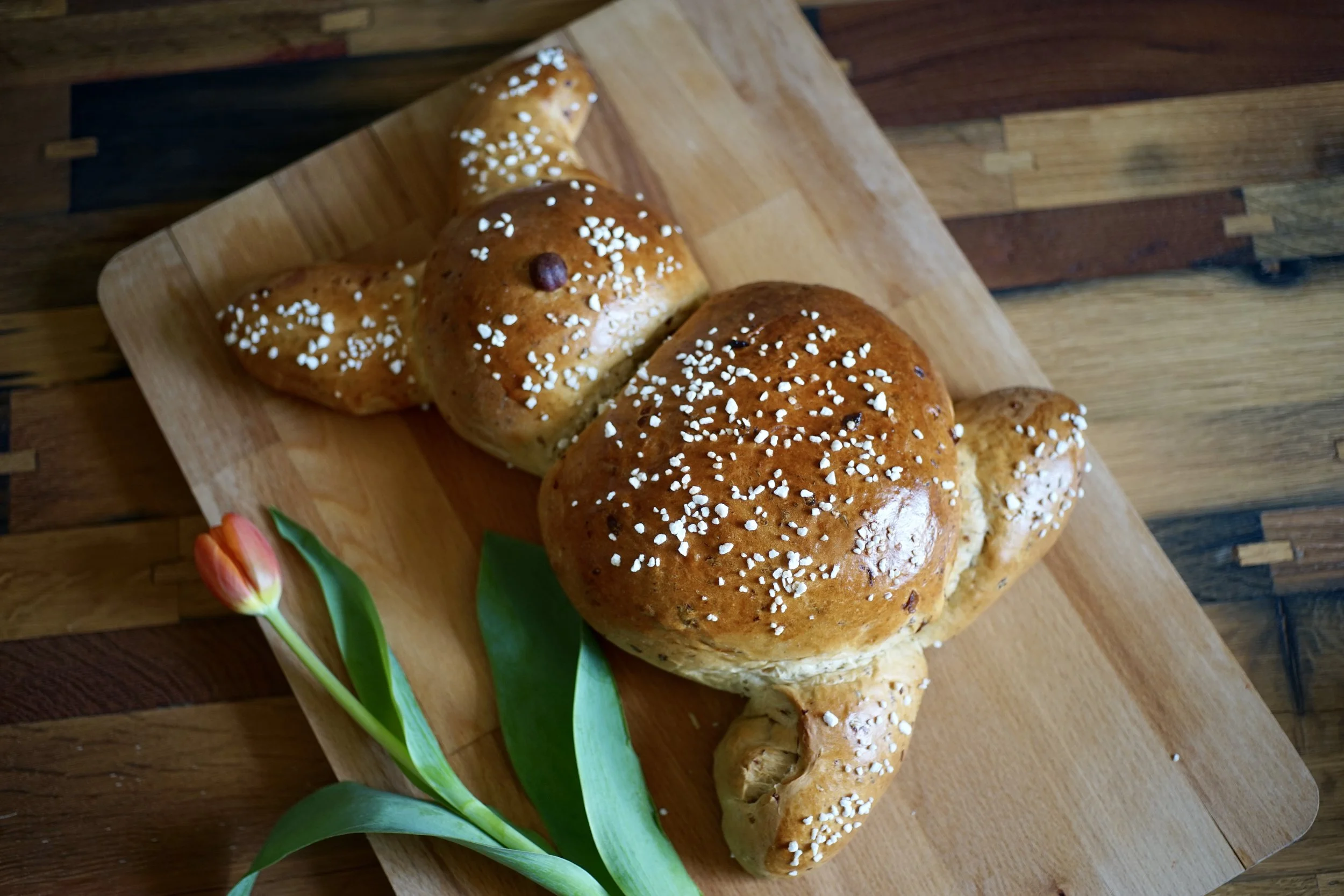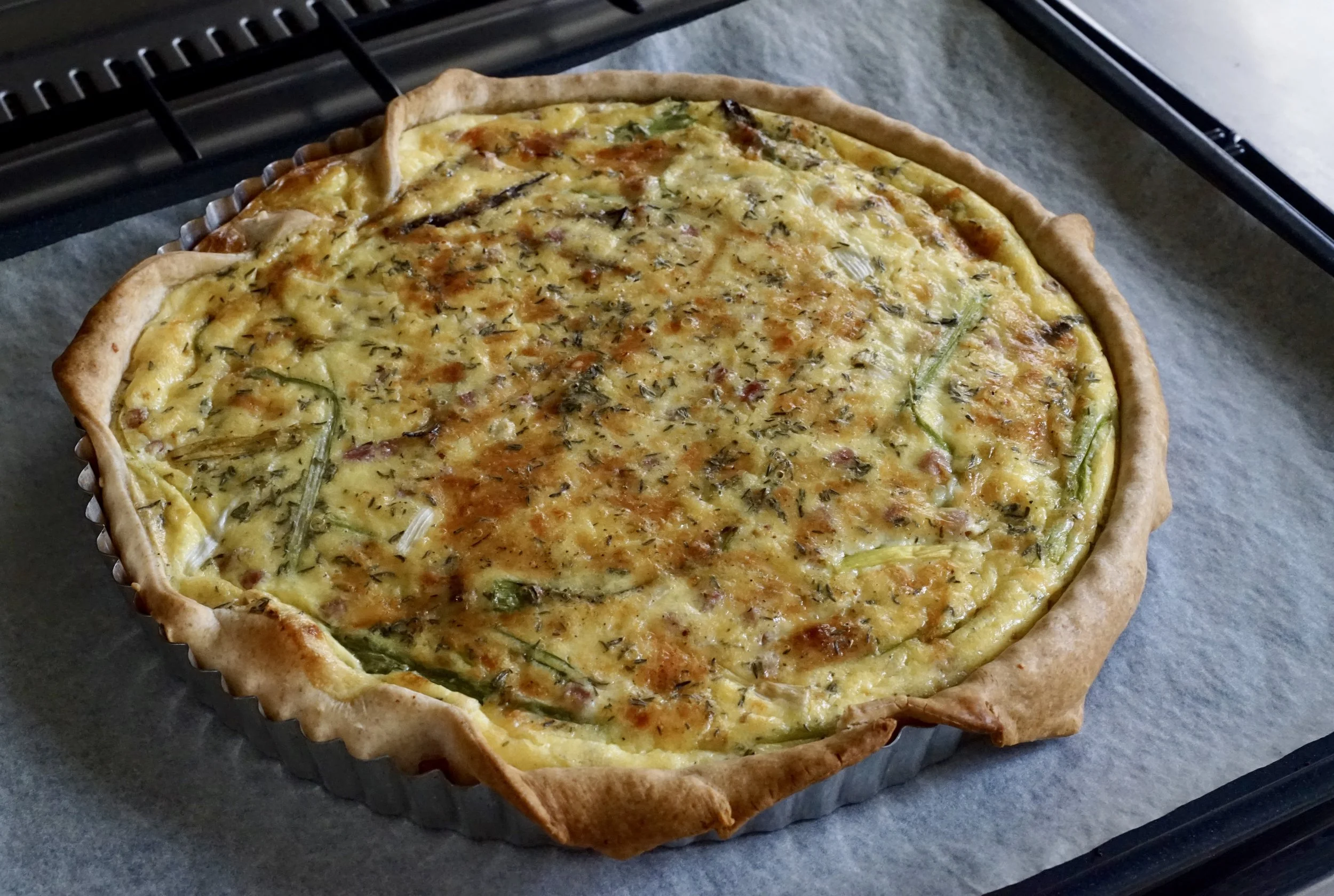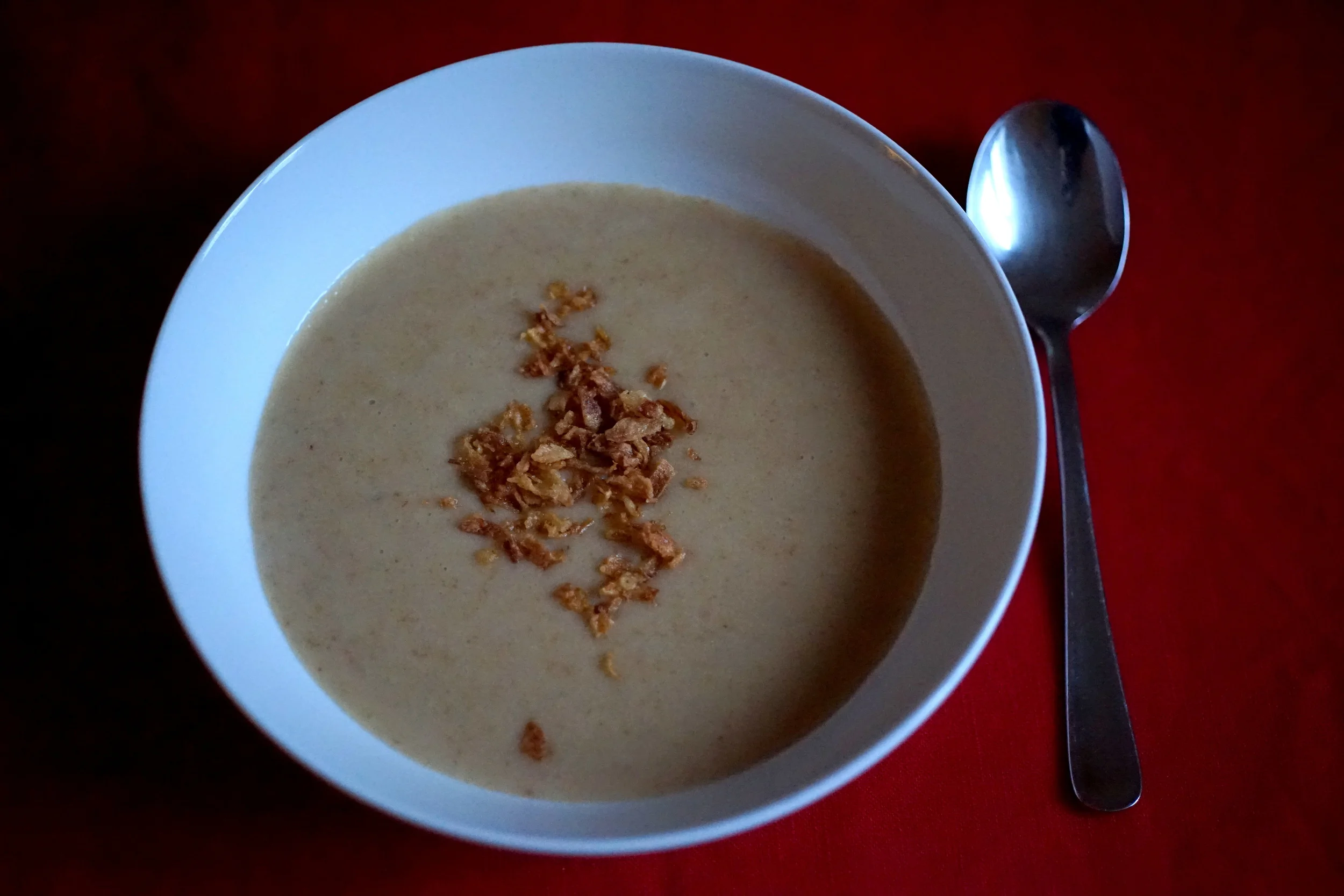Osterfladen
Osterfladen is basically a rice or semolina pudding, baked in a pastry shell. It is sold in the weeks leading up to Easter in most Swiss bakeries.
Osterfladen, a history
According to the Kulinarisches Erbe, some form of Osterfladen may date back to as early as 962, though sources are hazy. There is, however, mention of such a cake being blessed by a priest in Basel in the 1300s. It wasn’t just a Basler speciality, over the next centuries it was mentioned in other religious texts throughout Switzerland.
However, there is no way of knowing if the ingredients of these early Osterfladen match the ingredients of the cakes eaten today. The first available recipes for a similar cake are from the end of the 16th century, but they don't always specify that the cake is related to Easter celebrations.
For example, a cookbook by Anna Wecker, Ein köstlich new Kochbuch, (the first German cookbook published by a woman) mentions a cake similar in form to the Osterfladen of today. However, Wecker was a nutritionist who wrote about treating illness through food and didn't mention the cake as particularly connected to Easter. She did, though, suggest that it would help those suffering from fever, fainting, coughing and other such ailments. This is echoed in nutritionist Albert Spycher’s writings around the same time, although in his work he does mention the cake in relation to Easter.
In some of these early recipes, parmesan cheese was included in the dough, but this was soon abandoned for a sweeter crust. The Bernerisches Koch-Büchlein from 1749 (pictured here) uses bread as a starchy filling instead of rice or semolina and the flavouring is rosewater and wine.
By the 19th century, the Osterfladen as it is known today made it into rotation in most Swiss bakeries, having been included in much of the professional literature for pastry chefs (for example, Otto Bierbaum's Conditorei-Lexikon (pastry lexicon) from 1898).
This recipe is based on the one in the 1990 edition of Tiptopf.
For the pastry:
200 g flour
2 tbsp sugar
1 tsp salt
the zest of half a lemon
80 g butter, cold
125 ml water, cold
To assemble:
5 tbsp apricot jam
For the filling:
400 ml milk
1 tsp vanilla paste or extract
pinch salt
4 tbsp semolina
half a lemon, zest and juice
1 tbsp butter
3 tbsp sugar
60 g ground nuts
3 eggs
100 g raisins
To decorate:
icing sugar
First make the pastry.
In a large bowl, mix together the flour, sugar, salt and lemon zest. Add the cold butter in pieces and rub into the flour mixture with your fingers until you have small flakes.
Make a well in the middle of the flour and add the water. Mix this gently until a dough forms. Do not overwork the dough or it will become tough.
Press the dough into a disc, wrap with plastic or other reusable wrapper, and let cool in the fridge for at least an hour.
Roll out your dough and line a 26 cm (10 inch) round tart pan. Keep the tart shell in the freezer until you have the filling ready.
Now make the filling.
In a medium sized pot, bring the milk, vanilla, and salt to a boil. Add the semolina and stir well. Reduce the heat to low and cook for about 10 minutes, stirring from time to time until the mixture thickens. Take off the heat and stir in the lemon zest, lemon juice, butter, sugar, and ground nuts, and mix well.
Let cool for at least 10 minutes.
Preheat oven to 200 C / 400 F / gas mark 6.
Using a separate bowl and an electric mixer, whip the egg whites until they are stiff and glossy.
Once the semolina mixture has cooled, mix in the yolks, then gently fold in the whites and then the raisins.
Spread first the jam, then the filling over the pastry base.
Bake for about 40 minutes, or until the top is lightly browned and the bottom is baked through.
Decorate with icing sugar.
For a bunny motif
Cut a bunny shape out of parchment or wax paper, either freehand or using a cookie cutter as a template.
Put the bunny in the middle of the Osterfladen and, once the tart has fully cooled, dust with powdered sugar.
To save time, you can use use store-bought dough like Kuchenteig/Pâte Brisée/Pasta per Crostate to line your pan.
Semolina is also sold as semolina flour. In Swiss supermarkets this is called Hartweizengriess/Semoule de Blé dur/Semola di Grano Duro.
I like to plump my raisins in advance. You can use booze or tea to do this, just cover the raisins in the liquid and let them sit for an hour or overnight. Strain and add to the recipe as directed.
The semolina can be replaced with short grain rice, just increase the filling cooking time to 30 minutes.
You can decorate this in any way, tulips, chicks, or a bounty of bunnies, one for each slice.
Photos updated in March 2023.
















